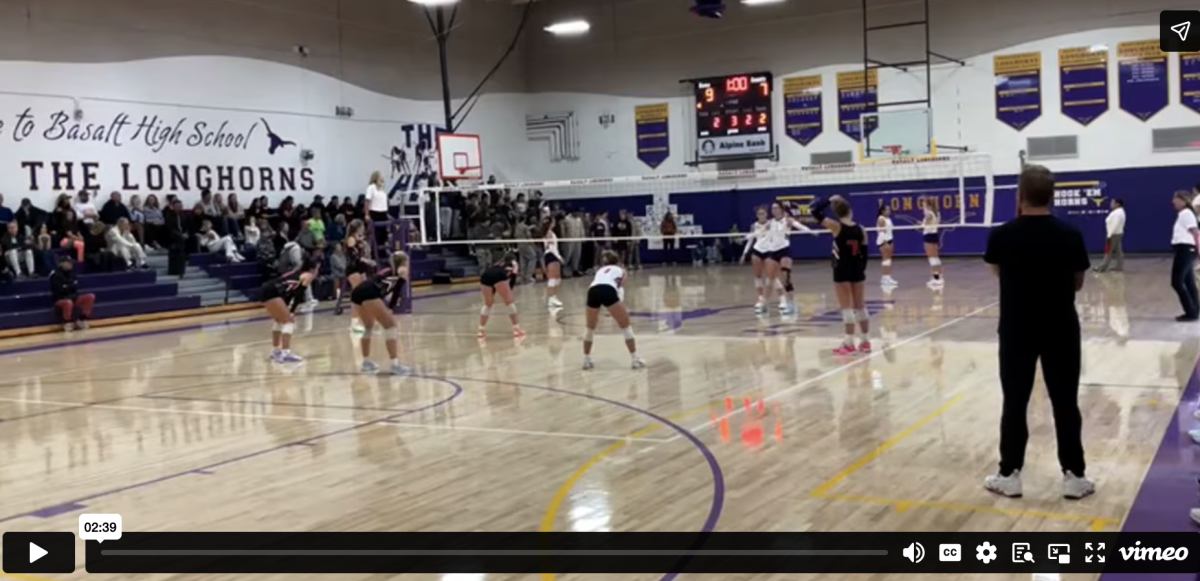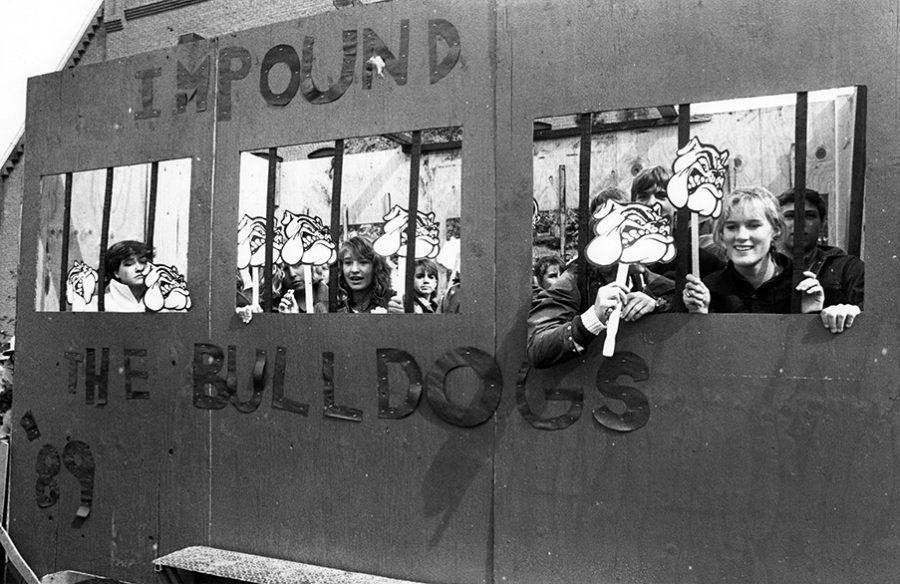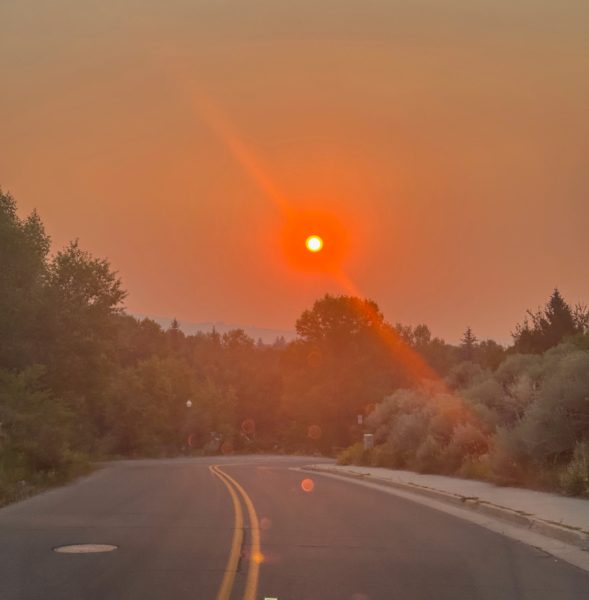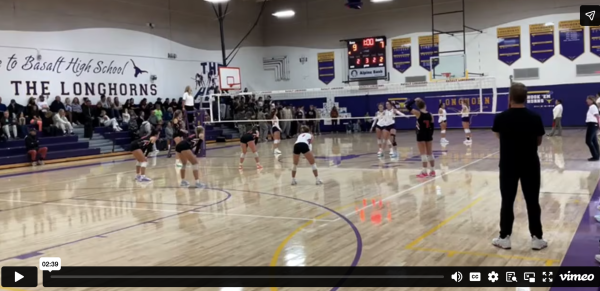Aspen High’s secretive hazing history
Photo Courtesy of Aspen Historical Society
Aspen High’s sophomore class in 1986, just before their homecoming float was burnt down by the senior class as an act of hazing. The photo is in the October 2, 1986 Aspen Times, p. 1C.
Many know Aspen High School as a competitive, highly achieving public school, but few know the history of the malicious hazing that hides behind its academic achievements. In 1983, there was a huge hazing scandal. Lorenzo Semple, only a freshman at this time, walked into AHS’s skier dome on the first day of school and witnessed something that would scar his mind forever.
“The seniors had hung freshman up by their underwear on the hooks around the brick walls of the skier dome. They were throwing basketballs at them. My only saving grace was that my sister was a senior. Some of the perpetrators took a liking to her. So as her little brother, there was a hazing loophole for me.” Semple said.
The hazing culture at AHS during this time was extremely physical. Even though many hazing acts were borderline illegal, students refrained from reporting them due to the fact that there would be more aggressive acts. Aspen High was a dark and peculiar place, not even close to its flawless reputation today.
“I think there was an element that if you came forward, things would be a lot worse. Now, that’s not to say that no one got in trouble for hazing, but the culture at the high school was different. It was common to see a car in the parking lot with a rifle in the window and a gun rack. The concept of a school shooting hadn’t even been invented yet.” Semple said.
Generation Z, who currently populate high schools nationwide, will never know life without school shootings. Unlike Semple’s years at AHS, the idea of guns being in someone’s car can bring terror to the administration and students. Today, hazing is known for being a part of several school sports traditions. Every year in volleyball, the freshman were required to write a song with a partner about a certain senior on the team and perform it in front of the school. Katie Yocum, now a senior at AHS, remembers the utter embarrassment of this experience.
“There was just this big crowd in a circle watching us and the seniors were all sitting there. I had one of the scariest seniors. I was the last person to go and for some reason, my partner didn’t show up to sing with me. I had to do it by myself.” Yocum said.
Yocum credits that experience as a tradition, not hazing, but AHS’s principal, Tharyn Mulberry, thought otherwise and banned it from ever happening again. So, what separates hazing from fun and games? AHS’s hazing problem has been minimized significantly since the 1980s, but simple traditions continue to get banned. In 1959, AHS’s graduating class had only 25 people, Cheri Oates being one of them. With the tiny class size, hazing was particularly uncommon.
“We really didn’t have any type of hazing. Some of the kids who were shy and not in the school activities were not shunned, but left out. I am very aware of it now more than ever. When we have had reunions over the years, some of those students never came, nor did we ever hear from them again.” Oates said.
Unlike the 80s, hazing was non-existent 25 years earlier. The varying demographics in the school demonstrates whether or not hazing might be allowed. Oates also mentioned that the only sports girls had was ski team, which limited the risk of hazing within sports. From the football teams tradition of shaving freshman’s heads during homecoming week to the volleyball team making freshman sing in the commons, AHS’s hazing secrets are still hidden. Oates continues to communicate the importance of stopping hazing.
“We have to be kind to one another. There is such a large hazing epidemic within high schools across America and it has to end. I have seen Aspen High’s hazing most of my life since my kids went there as well, but I am happy to say now that it’s nowhere as bad as it was 30 to 40 years ago.” Oates said.

Bella is a senior at AHS and this is her third year as a staff writer for the Skier Scribbler. Bella is also apart of the AHS Dance Team and spends her...































